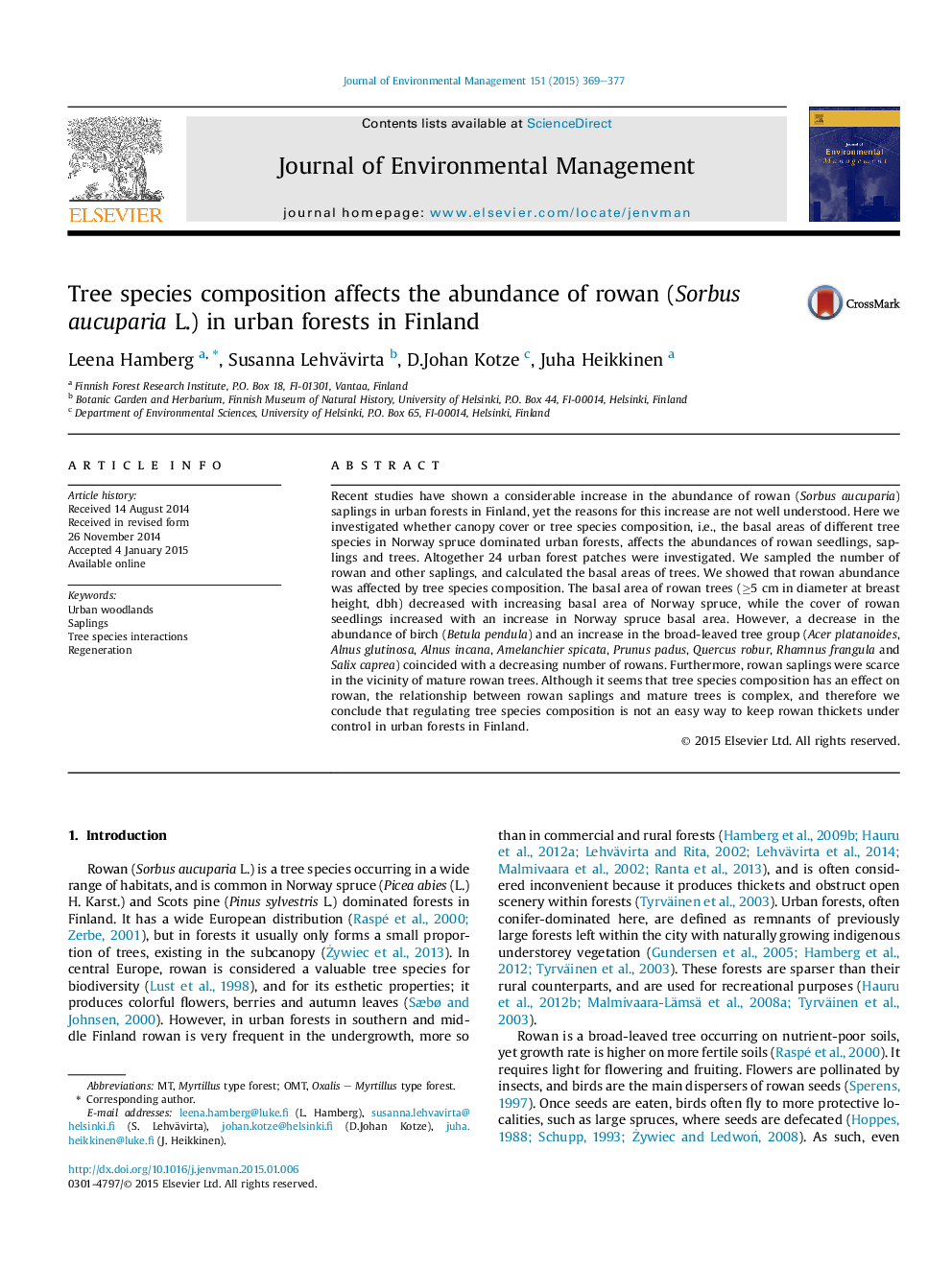| Article ID | Journal | Published Year | Pages | File Type |
|---|---|---|---|---|
| 7483016 | Journal of Environmental Management | 2015 | 9 Pages |
Abstract
Recent studies have shown a considerable increase in the abundance of rowan (Sorbus aucuparia) saplings in urban forests in Finland, yet the reasons for this increase are not well understood. Here we investigated whether canopy cover or tree species composition, i.e., the basal areas of different tree species in Norway spruce dominated urban forests, affects the abundances of rowan seedlings, saplings and trees. Altogether 24 urban forest patches were investigated. We sampled the number of rowan and other saplings, and calculated the basal areas of trees. We showed that rowan abundance was affected by tree species composition. The basal area of rowan trees (â¥5 cm in diameter at breast height, dbh) decreased with increasing basal area of Norway spruce, while the cover of rowan seedlings increased with an increase in Norway spruce basal area. However, a decrease in the abundance of birch (Betula pendula) and an increase in the broad-leaved tree group (Acer platanoides, Alnus glutinosa, Alnus incana, Amelanchier spicata, Prunus padus, Quercus robur, Rhamnus frangula and Salix caprea) coincided with a decreasing number of rowans. Furthermore, rowan saplings were scarce in the vicinity of mature rowan trees. Although it seems that tree species composition has an effect on rowan, the relationship between rowan saplings and mature trees is complex, and therefore we conclude that regulating tree species composition is not an easy way to keep rowan thickets under control in urban forests in Finland.
Related Topics
Physical Sciences and Engineering
Energy
Renewable Energy, Sustainability and the Environment
Authors
Leena Hamberg, Susanna Lehvävirta, D. Johan Kotze, Juha Heikkinen,
